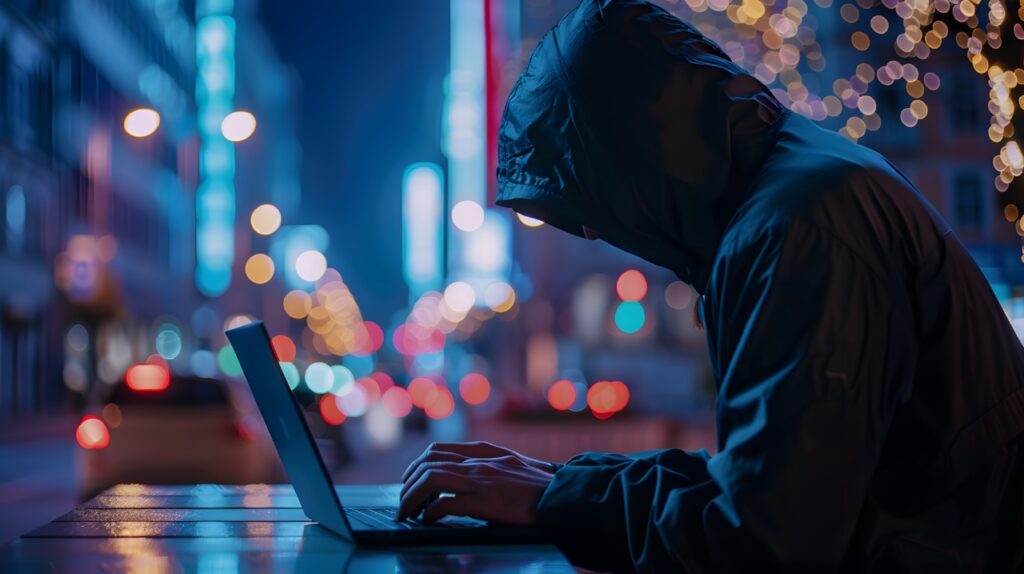Picture this: you’re enjoying your morning coffee, scanning through emails, and you open one that seems harmless—maybe it’s an invoice from a known vendor, or a message from someone on your executive team. Only, it’s not. You click on a link, and just like that, you’ve unwittingly opened the door to a hacker.
This is the world of phishing attacks—a realm where cybercriminals rely on human error to infiltrate networks, steal data, and hijack sensitive information. Even though large corporations often grab the headlines when big breaches happen, small and mid-sized businesses are also prime targets. In fact, hackers count on the assumption that smaller operations lack sophisticated defenses.
So, how can you stay ahead of these threats? It starts with knowing your enemy (what phishing looks like) and building a company culture where everyone is on guard. Here’s how you can level up your team’s vigilance and strengthen your organization against the ever-evolving world of phishing.
What Exactly Is Phishing?
Phishing is, at its core, an online scam. Cybercriminals pose as trustworthy sources—like banks, vendors, or even your boss—to trick employees into sharing passwords, credit card numbers, or other sensitive data. It typically happens via email, but we’re also seeing a rise in smishing (phishing through text messages) and vishing (phishing by phone).
The goal is simple: gain access. Once the attacker is in, they can install malware, launch ransomware, or exfiltrate valuable data. And while massive breaches make news, phishing is often the quiet first step in these attacks.
1. Recognizing the Sneakiest Phishing Tactics
1.1 Email Phishing:
This is the classic form most of us are familiar with. You’ll get an email that seems legit but has glaring red flags—like misspellings, urgent calls to action (“Your account will be closed!”), or suspicious links leading to fake websites.
1.2 Spear Phishing:
Hackers do their homework here. They target specific employees—often those in finance or executive roles—using details gleaned from social media or public records to make the message feel personal. When an email references your recent conference appearance or a project you just launched, it’s harder to spot the trick.
1.3 Smishing and Vishing:
Don’t discount those texts and phone calls. Attackers pretend to be IT support, bank reps, or even government agencies. They’ll ask for passwords or passcodes—something your real bank or IT team would never do.
1.4 Clone Phishing:
This is where hackers copy an actual email you once received, then replace the real attachment or link with a malicious one. It’s a clever ruse because everything else about the email might look the same.
2. Creating a Culture of Cyber Awareness
You can’t fight off phishing if your team doesn’t know what it looks like. This is where training comes in. Think of it as fire drills for the digital age.
2.1 Make Training Routine, Not a One-Off:
Many companies offer a quick cybersecurity workshop once a year and call it good. But threats evolve constantly. Regular workshops—quarterly or monthly—keep employees up-to-speed on the latest phishing tactics. Use real-world examples so your team can see how creative scammers can get.
2.2 Show Them the Red Flags:
Teach everyone to scrutinize email addresses, hover over links, and question any request that demands immediate action. If an email from “finance@yourcompany.com” suddenly appears with grammatical errors or logos that don’t match, it’s time for employees to pick up the phone and verify.
2.3 Simulate Attacks, Then Learn:
Phishing simulations are one of the best ways to assess how prepared your team really is. Send out harmless “test” emails to see who clicks. Use the results to refine your training and—importantly—avoid shaming individuals. The goal is a safer workplace, not singling out mistakes.
2.4 Encourage a No-Blame Culture:
Everyone makes mistakes. By ensuring that employees don’t fear repercussions for reporting suspicious activity or even admitting they clicked on something, you create an environment where quick reporting is the norm. The faster your team raises the alarm, the less damage a real phish can do.
3. Reinforcing the Technical Defenses
All the training in the world won’t help if your technical safeguards are lacking. Consider these tools and strategies to build a safety net:
3.1 Powerful Email Filters:
Spam filters and real-time link scanning can catch many phishing attempts before they ever make it to an inbox. Look for email authentication tools (SPF, DKIM, DMARC) to further reduce risk.
3.2 Multi-Factor Authentication (MFA):
Passwords alone aren’t enough these days. By enabling MFA—like text codes or app-based verification—you add an extra step that thieves struggle to bypass. Even if they have a username and password, MFA can stop them in their tracks.
3.3 Identity and Access Management Solution:
While MFA is a great start, an identity and access management solution takes protection even further. It ensures each employee only has access to the tools and data they genuinely need, reducing the fallout if a single account is breached.
3.4 Network Segmentation:
Let’s say a hacker does sneak in. If your network is segmented, they can’t hop from an employee’s account into your entire system. By walling off sections—like your finance department, CRM software, or R&D lab—you confine potential damage to a much smaller area.
4. Ongoing Vigilance: Your Best Offense and Defense
Phishing isn’t a one-time risk. Attackers change tactics constantly, aiming to outsmart your security measures. That means your organization’s cyber readiness has to be continuous.
- Stay Informed: Follow cybersecurity news and threat intelligence sources, then share pertinent updates with your team.
- Review Policies Regularly: Password management, BYOD (bring your own device) guidelines, and data handling protocols need periodic refreshes.
- Plan for the Worst: Even the best defenses can’t promise zero breaches. Have a game plan for rapid response if an attack slips through. Who do you notify? Which systems do you shut down first?
Wrapping Up
Phishing is a silent prowler, preying on the natural trust and busyness of everyday employees. But with consistent training, a supportive reporting culture, and smart technical safeguards—like MFA and a robust identity and access management solution—you can greatly reduce the odds of becoming the next phishing casualty.
Remember, cybersecurity isn’t a destination but an ever-evolving journey. As scammers get smarter, so must we. By staying one step ahead—through awareness, technology, and a proactive mindset—you’ll keep your network, and your reputation, secure.
Word Count: ~800 words
Caroline is doing her graduation in IT from the University of South California but keens to work as a freelance blogger. She loves to write on the latest information about IoT, technology, and business. She has innovative ideas and shares her experience with her readers.





![‘Frankenstein’ Review – Guillermo del Toro’s Definitive Look At The Nature And Nurture Of Monstrosity [TIFF 2025] ‘Frankenstein’ Review – Guillermo del Toro’s Definitive Look At The Nature And Nurture Of Monstrosity [TIFF 2025]](https://cdn.geekvibesnation.com/wp-media-folder-geek-vibes-nation/wp-content/uploads/2025/10/Frankenstein-175_PF_20240430_20377_R-300x200.jpg)
![‘Wake Up Dead Man: A Knives Out Mystery’ Review – In Rian Johnson We Trust [LFF 2025] ‘Wake Up Dead Man: A Knives Out Mystery’ Review – In Rian Johnson We Trust [LFF 2025]](https://cdn.geekvibesnation.com/wp-media-folder-geek-vibes-nation/wp-content/uploads/2025/10/Wake-Up-Dead-Man-A-Knives-Out-Mystery-300x169.jpg)